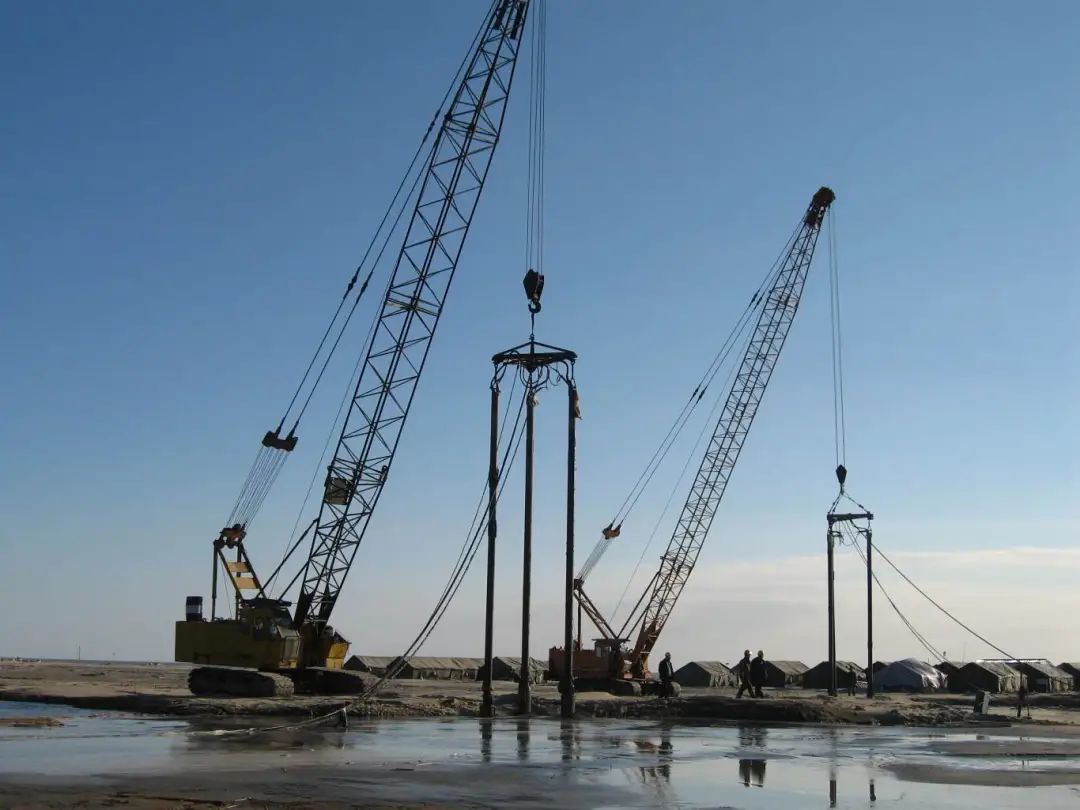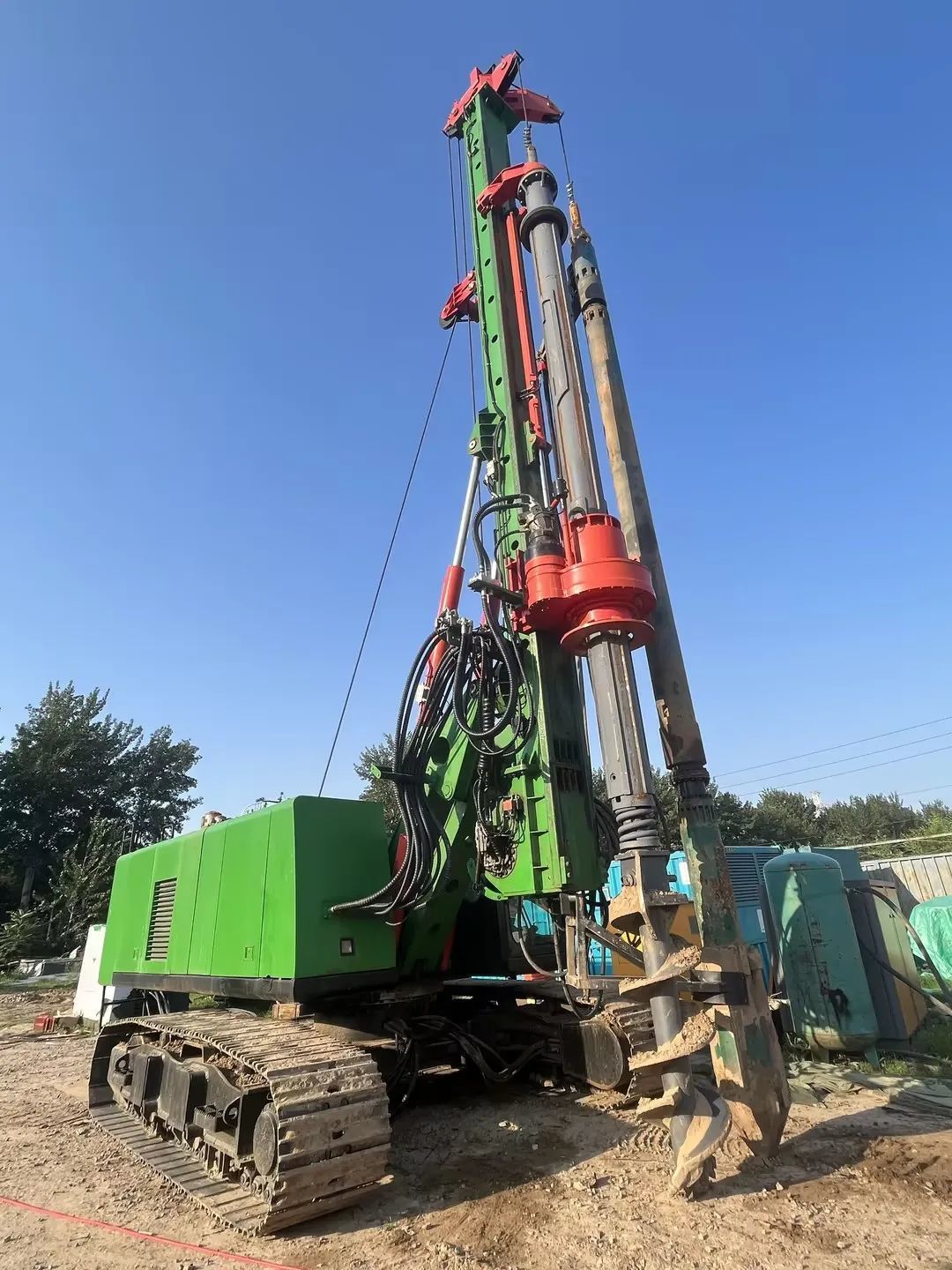Depth Vibrator hoisting equipment
One Vibrator + Crane

A crane is a common name for a hoisting machine. A hoisting machine is a type of lifting machinery, a kind of machinery that operates in a cyclical and intermittent manner. One work cycle includes: the lifting device lifts the goods from the pickup point, then moves horizontally to the designated location and lowers the goods, then reverses to return the lifting device to its original position for the next cycle. Examples include fixed rotary cranes, tower cranes, truck cranes, tire cranes, and crawler cranes, etc.
A crane is commonly known as a hoist. A crane is a type of lifting machinery and a kind of machinery that operates in a cyclic and intermittent manner. A working cycle includes: the load-handling device lifts the goods from the place where they are picked up, then moves horizontally to the designated location and lowers the goods, and then makes a reverse movement to return the load-handling device to its original position so that the next cycle can be carried out. Examples include fixed slewing cranes, tower cranes, truck cranes, tyre cranes and crawler cranes, etc.
Two Vibrator + Pile Frame

The pile frame includes columns, column connection devices and chassis, but excludes pile driving and extracting devices and other equipment frames.
The frame that includes columns, column connection devices and chassis, but excludes pile driving and extracting devices and other equipment.
Three Vibrator + Rotary Drilling Rig

Rotary drilling is a construction technique suitable for hole-forming operations in building foundation engineering. It is widely used in foundation construction projects for municipal construction, highway bridges, high-rise buildings and other places. With different drilling tools, it is applicable to hole-forming operations in dry conditions (short auger), wet conditions (rotary bucket) and rock formations (core drill).
Rotary drilling is a construction technique suitable for hole-forming operations in building foundation engineering. It is widely used in foundation construction projects for municipal construction, highway bridges, high-rise buildings and other places. Cooperating with different drilling tools, it is applicable to hole-forming operations in dry conditions (with short auger), wet conditions (with rotary bucket) and in rock formations (with core drill).
A rotary drilling rig is a construction machine suitable for hole-forming operations in building foundation engineering. It is mainly suitable for construction in soil layers such as sandy soil, cohesive soil and silty soil, and is widely used in various foundation construction projects such as cast-in-place piles, diaphragm walls and foundation reinforcement. The rated power of a rotary drilling rig is generally 125 to 450 kW, the power output torque is 120 to 400 kN·m, the maximum hole-forming diameter can reach 1.5 to 4 m, and the maximum hole-forming depth is 60 to 90 m, which can meet the requirements of all kinds of large-scale foundation construction.
Rotary drilling rigs are construction machinery suitable for hole-forming operations in building foundation engineering. They are mainly applicable to the construction of soil layers such as sandy soil, cohesive soil and silty soil, and are widely used in various foundation construction projects like cast-in-place piles, diaphragm walls and foundation reinforcement. The rated power of rotary drilling rigs is generally 125 to 450 kW, the power output torque is 120 to 400 kN·m, the maximum hole-forming diameter can reach 1.5 to 4 m, and the maximum hole-forming depth is 60 to 90 m, which can meet the requirements of all kinds of large-scale foundation construction.
Four Vibrator + Excavator

An excavator, also known as excavation machinery or earthmoving machinery, is earthmoving machinery that uses a bucket to excavate materials above or below the machine's bearing surface and load them into transport vehicles or unload them at stockpiles. The materials excavated by excavators are mainly soil, coal, silt, and pre-loosened soil and rocks. Judging from the development of construction machinery in recent years, excavators have developed relatively rapidly and have become one of the main types of construction machinery in engineering construction. Three important parameters of excavators are operating weight (mass), engine power, and bucket capacity.
Excavators, also known as excavation machinery or earthmovers, are earth-moving machines that use buckets to dig materials above or below the bearing plane of the machine and load them into transport vehicles or unload them at stockyards. The materials excavated by excavators are mainly soil, coal, silt, as well as pre-loosened soil and rocks. Judging from the development of construction machinery in recent years, excavators have developed relatively rapidly and have become one of the most important types of construction machinery in engineering construction. The three most important parameters of excavators are operating weight (mass), engine power and bucket capacity.



